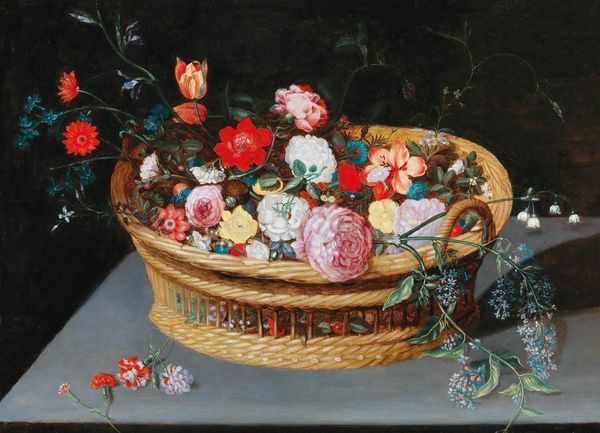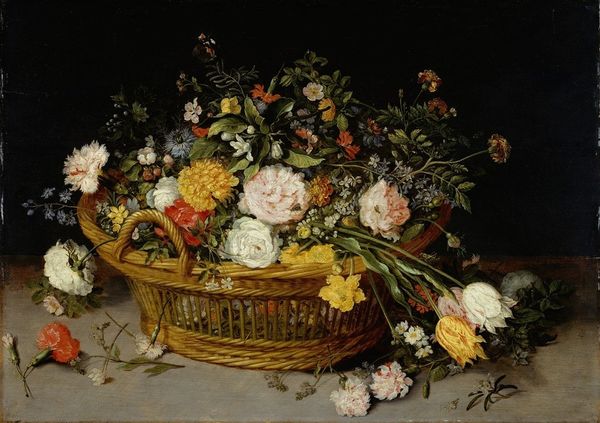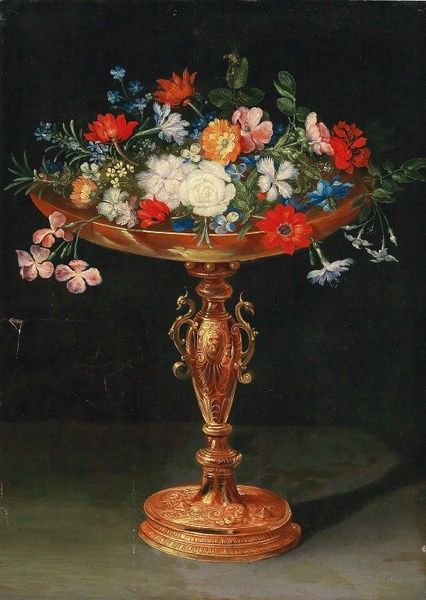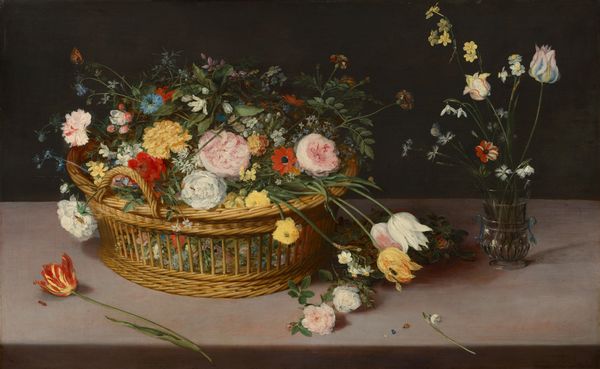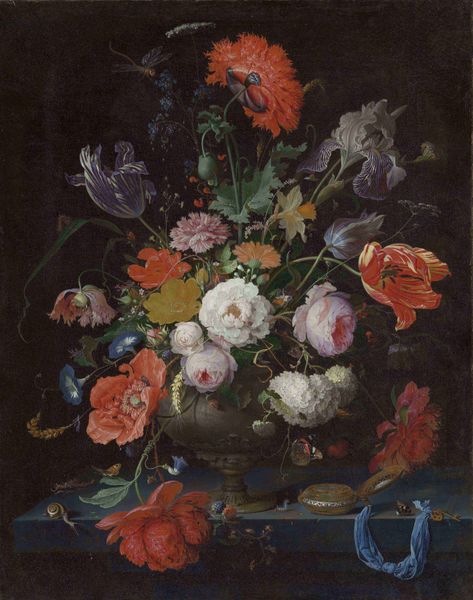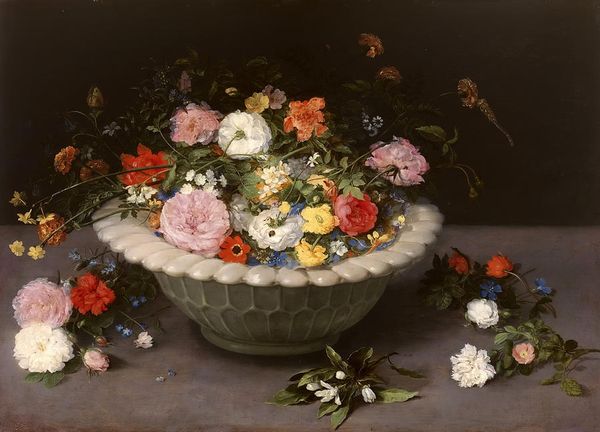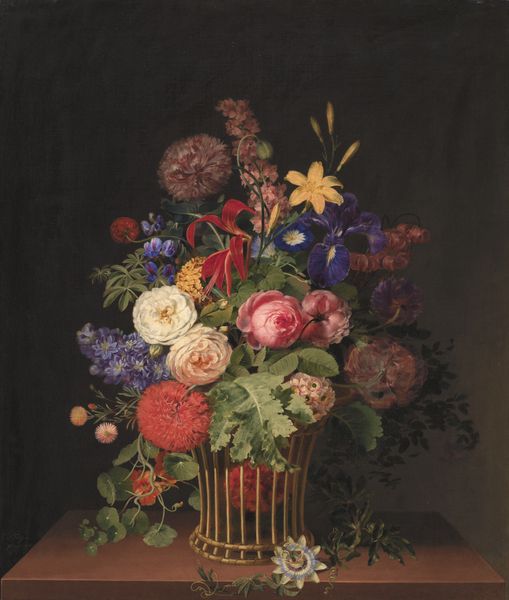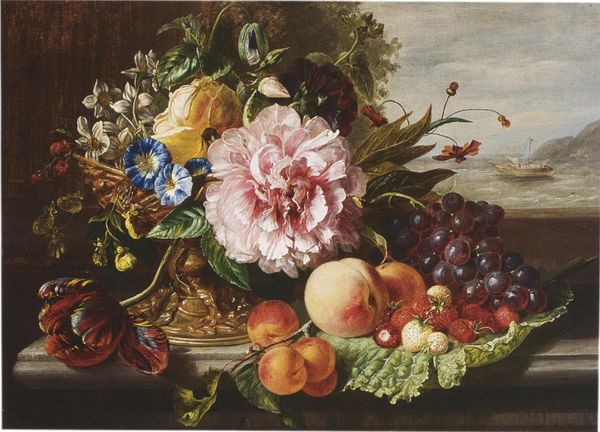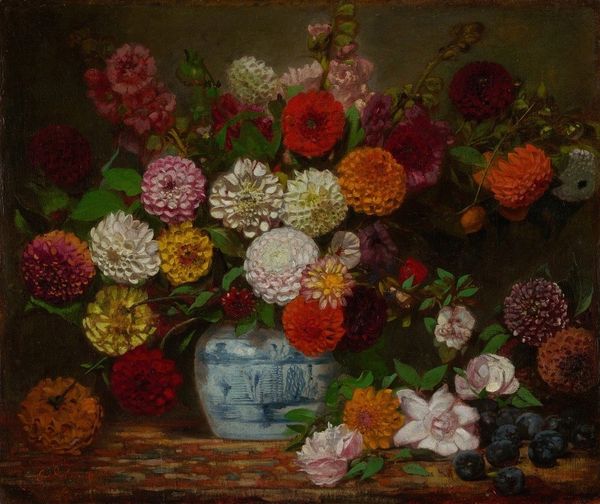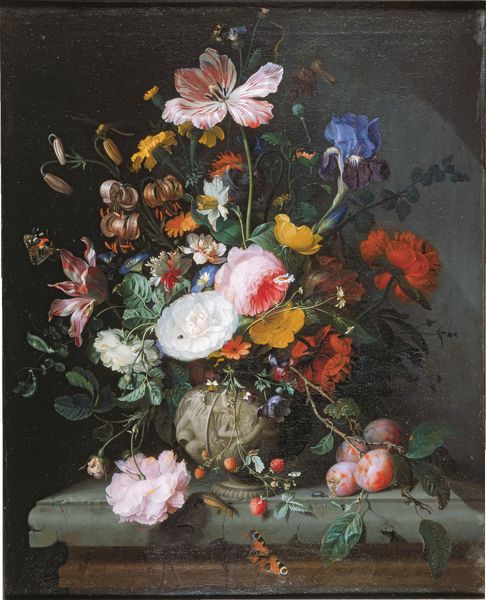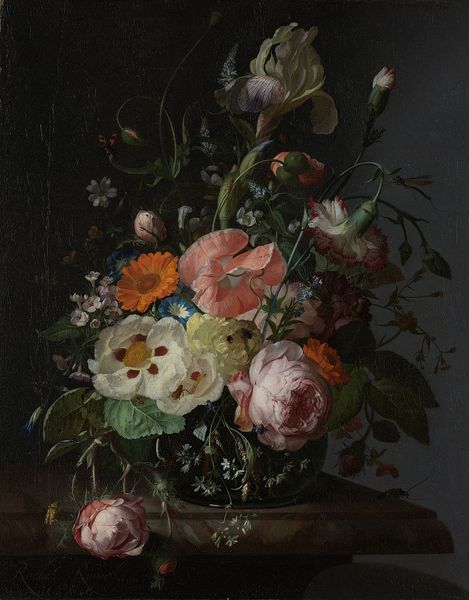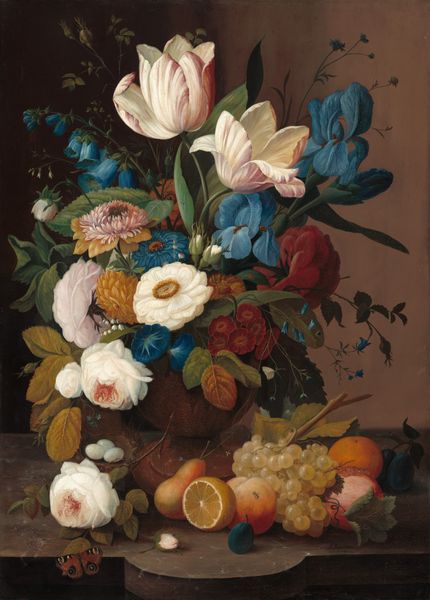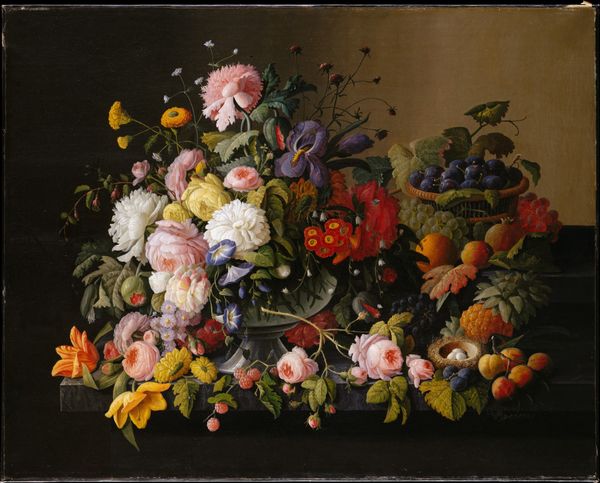
painting, oil-paint
#
baroque
#
painting
#
oil-paint
#
floral element
Copyright: Public Domain: Artvee
Curator: Looking at this painting, "Mixed Flowers in a Basket with a Tazza Nearby" by Jan Brueghel the Younger, I'm struck by how vividly it captures the textures of both the flora and the woven basket. The artist really knew how to work with oils. Editor: Yes, the textural detail is stunning. It has an air of aristocratic extravagance about it, wouldn't you agree? There's a clear association with wealth and power, considering that each individual bloom would have been highly prized, some extremely rare, reflecting a very particular societal privilege. Curator: Absolutely, that is evident. And it’s worth remembering that paintings like these also served as important historical documents, since they are visual records, illustrating specific examples of then-prevalent materials, dyes, and even crafting and gardening techniques that were closely associated with guild activities and artisanal knowledge production. Editor: You are correct to make the comparison between materials and commerce; moreover, in this context, shouldn't we think about how female viewers may have internalized ideals around cultivated beauty? It evokes not only notions of status but gender roles as well, suggesting what feminine refinement may have implied. Curator: I hadn't considered the gendered aspect directly, although now that you mention it, I completely see it! But going back to production... the illusion he achieves on canvas is fascinating because he had to truly understand how light interacts with each type of surface to faithfully render the differences. I can almost feel the rough texture of the basket juxtaposed with the silky petals. Editor: That illusion serves to create an aspirational image – beauty divorced from its inevitable decay, accessible to an exclusive clientele... We must always ask ourselves, who is this artwork really for, and what narratives is it reinforcing or subtly undermining? Curator: That’s a very important consideration, particularly today, with our awareness of accessibility and equity in artistic and historical representations. I'll certainly view it from a more critical vantage from now on. Editor: Examining this piece through intersecting cultural lenses expands our understanding considerably. Curator: Yes, instead of a straightforward beautiful thing, now I perceive a fascinatingly complex intersection of the economy, culture, and labor practices of the past.
Comments
No comments
Be the first to comment and join the conversation on the ultimate creative platform.
